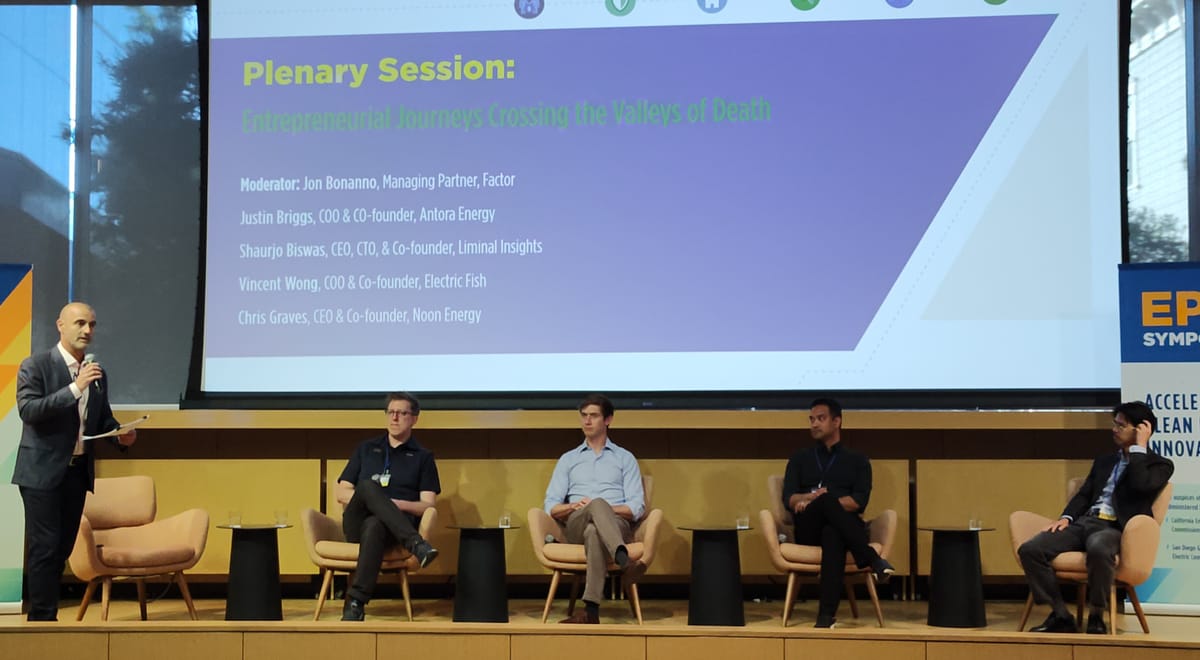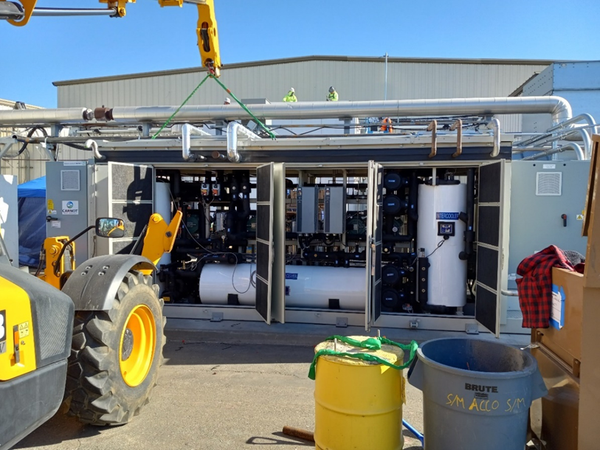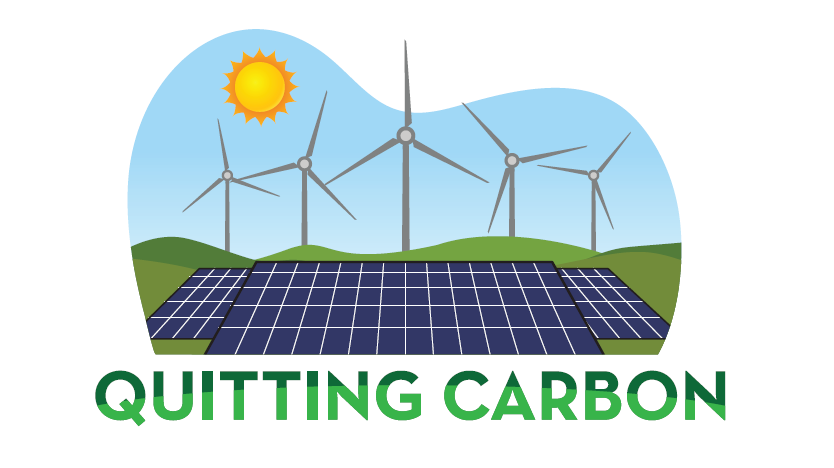California’s energy investments create EPIC opportunity for startups amid Trump's renewables rollbacks
Startups nurtured by California's flagship energy innovation R&D program were featured at the 11th annual EPIC Symposium this week in Sacramento.

Quitting Carbon is a 100% subscriber-funded publication. To support my work, please consider becoming a paid subscriber or making a one-time donation.
Californians who pay a utility bill can take credit for one of the state's most effective programs.
Funded by ratepayers, the Electric Program Investment Charge (EPIC) is California's premier energy research and development program. From 2012 to 2024, the program invested $1.4 billion in more than 500 projects to advance research, development, demonstration, and commercialization of clean energy technologies – funding that has catalyzed $18.9 billion in private follow-on investment.
For David Hochschild, the longtime chair of the California Energy Commission (CEC), that kind of bang for each dollar of public money makes EPIC "the best energy R&D program in the world."
That declaration came in Hochschild's opening remarks to the 11th annual EPIC Symposium, convened at the California Natural Resources Agency headquarters in downtown Sacramento on Tuesday. The daylong event gave the CEC, which administers the EPIC program along with the state's investor-owned utilities, the opportunity to highlight the achievements of recent grant recipients and to look ahead to the program's next five-year investment cycle (2026-2030).
The most powerful and persuasive testimonials of the day came from the four startup executives who spoke in the final plenary session about how pivotal EPIC funding was in the growth – and even the survival – of their companies.
At a time when the Trump administration is seeking to cancel tens of billions of dollars worth of federal climate funding, and Republicans in Congress succeeded in passing a budget reconciliation bill that slashed the Inflation Reduction Act's clean energy tax credits, state-level programs like EPIC can help to maintain momentum for climate action in the U.S.
And in that effort, no state pushes with as much force as the world's fourth-largest economy. "California is proud to dream big and deliver even bigger," as Governor Gavin Newsom (D) put it on Bluesky on Tuesday.
Bringing startups to scale
"We need to support and defend these programs," said Jon Bonanno, managing partner at the executive advisory platform Factor and moderator of the final session.
Speaking to the policymakers in the room – Josh Becker (D), chair of the Senate Energy Committee, had participated in a morning panel – Bonnano said, EPIC is "the best investment you could make." Each dollar invested in EPIC, he said, yields at least a 10x return in follow-in investment.
Bonanno walked the audience through the progressive ladder of funding available to entrepreneurs to scale their early-stage clean energy technologies via EPIC programs.
Startups could receive $10 million or more in critical non-dilutive funding (i.e. funding that doesn't require founders to give up equity or ownership) to scale their companies by successfully applying for funding from programs such as CalSEED, CalTestBed, RAMP (Realizing Accelerated Manufacturing and Production for Clean Energy Technologies), and BRIDGE (Bringing Rapid Innovation Development to Green Energy).
Vincent Wong, COO and co-founder of ElectricFish, which makes battery-integrated EV fast-chargers, said investment from the EPIC program "is a de-risking signal." The imprimatur of the California Energy Commission, he said, helped ElectricFish attract critical additional funding from outside investors.
Supported by $1.7 million in funding from the CEC, including CalSEED and RAMP grants, ElectricFish was able to scale up to a new 8,000-square foot manufacturing facility in San Carlos, California.
"I don't think Liminal would have survived without CEC funding," said Shaurjo Biswas, CEO, CTO, and co-founder of Liminal Insights, which has developed a battery inspection platform called EchoStat.
BRIDGE funding was "transformative," said Biswas. The funding enabled Liminal to develop "proof points" on performance that attracted new customers and it was a "catalyst to raise more money from VCs," he added.
Antora Energy, which builds and deploys thermal batteries for industrial applications, received a $2 million grant from the EPIC program to develop and field-test its long-duration energy storage system at an existing cogeneration power plant in Fresno County, California. The company's thermal battery stores energy in blocks of solid carbon at temperatures of up to 2,400°C (4,352°F). The super-heated blocks of graphite can be tapped to provide heat and power for industrial customers.
"Antora’s operational TPV [thermophotovoltaic] fabrication facility would not have been possible without [the] CEC," the company said in the acknowledgments of the California Energy Commission's final report on its project.
Justin Briggs, Antora's COO and co-founder, said the company has built two battery factories in the San Francisco Bay Area, employs 285 people, and has attracted $300 million in private funding.
Chris Graves, CEO and co-founder of Noon Energy, a long-duration energy storage developer, said its BRIDGE funding award had helped the company land nearly $30 million in Series A funding. Noon Energy was awarded $8.8 million under the EPIC program in June 2024 to "demonstrate a reversible carbon dioxide to carbon conversion-based storage system to provide 100 kilowatts/10 megawatt-hours of LDES combined with an existing solar PV field to provide up to 100 hours of capacity."
To be sure, there is even more that California could do to boost the energy innovation ecosystem in the state. When John Bonanno asked how officials could improve the EPIC program, the startup executives had suggestions.
Briggs said policymakers could make more money available for first-of-a-kind projects – bigger checks for big projects that have significant carbon-cutting potential. Fong said the EPIC program could do more to match startups with mission-aligned VCs. Bonanno himself said that EPIC program officials should strive to ensure reimbursement happens faster for award recipients.
But in the end, the success of the EPIC program demonstrates that public funding, invested just when startups need it most, can be a lifeline for the clean energy companies that will help us break our fossil fuel habit for good.




